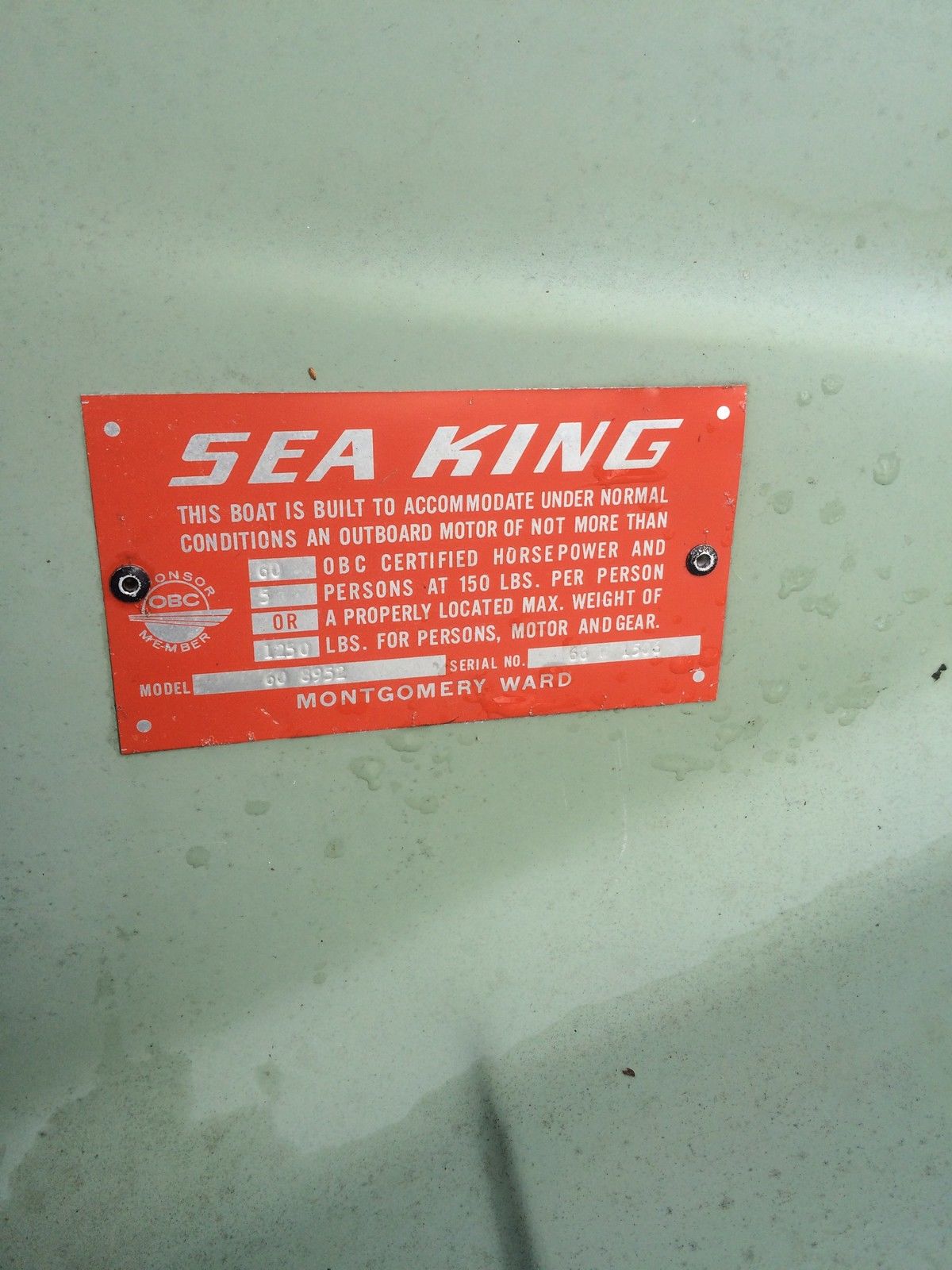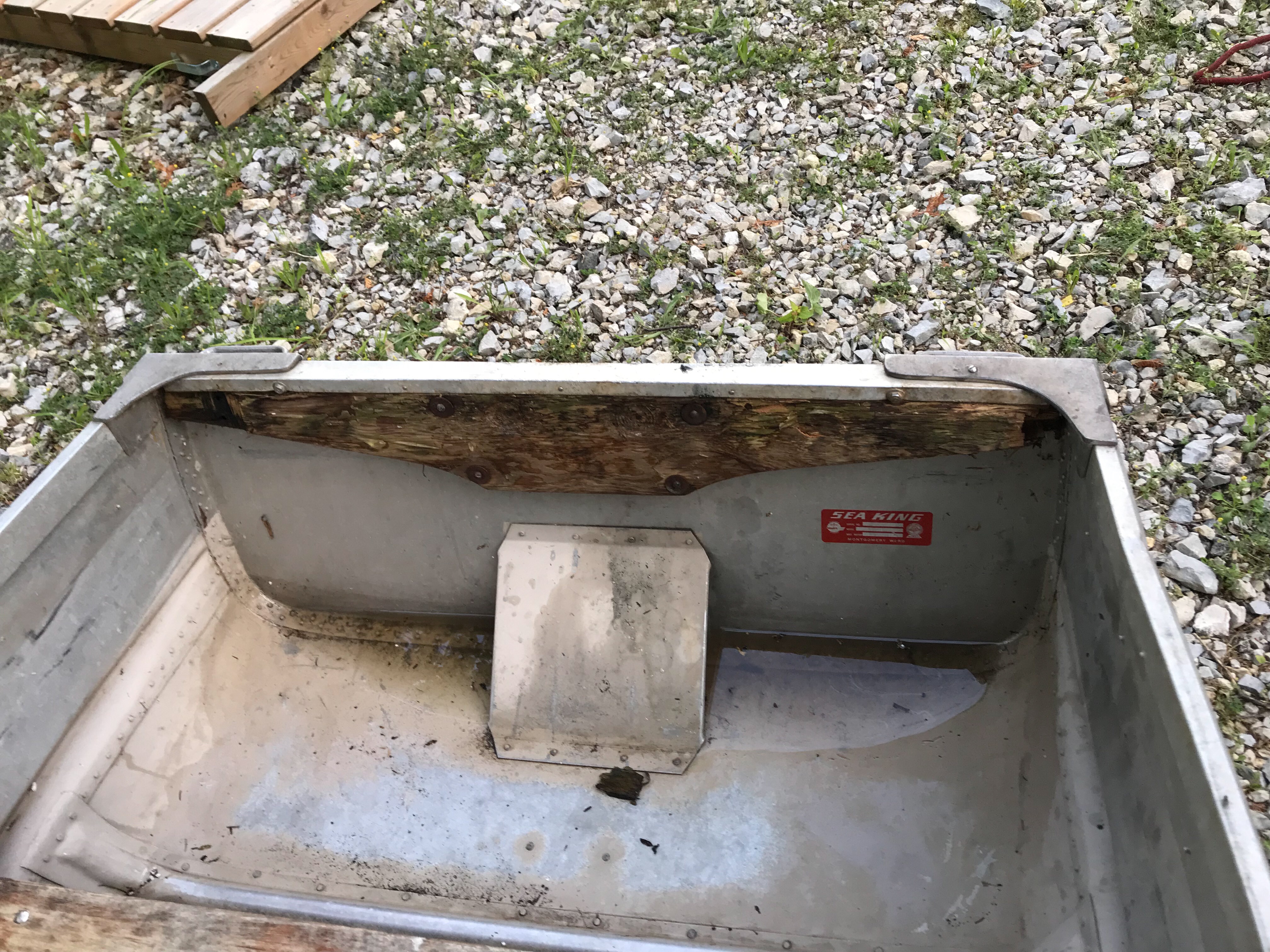View & download of more than 162 Montgomery Ward PDF user manuals, service manuals, operating guides. Lawn Mower, Ice Maker user manuals, operating guides & specifications. Apr 14, 2004 Through the years various manufactures produce the Sea King motor for Montgomery Wards. Thor, Lockwood, Mercury, Evinrude, Gale, West Bend, Chrysler, Eska and Clinton to name a few. We believe that 1986 was the last year that Montgomery Wards sold outboard motors. Please click on link below to view 'model year guide' for the Sea King Outboard. The serial number is stamped on the hosel of the driver (hard to find, but its there), the serial number for the irons set can be found on the hosel of the 6 iron. Load More Trending Questions. Sea King Outboard, 3 hp. Model GG9006A, Serial number 75X647771. 1973 6 hp Montgomery ward sea king outboard (walk through, test run, tips and tricks) Due to factors beyond the control of Danutdlp, it cannot guarantee agai.
All photos and Company History courtesyof Denise Goodwin
Angler Boat Company
Penn
The name Penn Yan is well known inboth the antique and contemporary boating communities. However, fewer peopleare acquainted with the Angler Boat Company, which produced thousands of boatsin Penn Yan, NY from the early 1950’s to the early1960’s. Angler was founded by the owner of the Penn YanBoat Company primarily to supply Sears, Roebuck and Montgomery Ward,
The two-story building at the corner of
The boats built for Sears were labeled Elgin Boats. Thosefor Montgomery Ward were labeled Sea King. A number of the boats were sold toFirestone and independent marine dealers under the Angler name.
Angler built only two sizes of boats – a 12-foot hull and a14-foot hull. One was a completely open boat with very little hardware. Thesecond design had a forward deck, which would take a steering wheel. The thirddesign, or deluxe model, had a forward and rear deck as well as seat backs andchrome hardward. The only difference between
Each year after a prototype design was agreed upon, thebuyers from Sears and Montgomery Ward would give an estimate as to what theyear’s requirements would be. Production would start on these units, most ofwhich would be warehoused. Late in the winter and before boating season began,some of the larger Sears and Ward stores would order a number of boats fordisplay and early promotion sales. These boats were usually delivered to thestores by Angler trailer, which was driven by employee Harry Bell. As springapproached and the orders started to increase, production at the Angler plantwould accelerate greatly. Some of the large Sears distribution centers such as
The boats built by Angler were ribbed boats with two layersof cedar planking with a sheet of vinyl sandwiched between. The boat forms werecalled male forms and were covered with stainless steel strips, which served as“buck” strips for clinching the brass nails.
The first operation was done by an employee known as the
The next step was the nailing of the cedar planking on theribs. The first layer of cedar was tacked with a galvanized tack, which wasdone only to hold the planking in place. The entire boat was then covered withone piece of vinyl. The second, or outside layer of cedar planking was nailedin place. The employee known as a tack spitter wouldplace a number of brass tacks in his mouth and feed them out one at a time ashe drove them. The tacks were sterilized because of this procedure. The tack
The outside of the hulls were covered with paste type fillerand sanded when dry. This created a smooth paintablesurface.
At this point an employee called a railertook over and removed the hull from the form. The keel and outside bow stemwere installed and the transom trimmed. The boat was turned right side up andthe railer would then trim the rib tops to the properlength and install the rails along with the transom knees, bow block or deck,seat risers and other items as dictated by the model.
FLBM Collection

The boat was then sent down to the finishing departmentwhere the unit was painted and varnished as needed. Any hardware or finaloperations as needed were handled at this point.
The packing of the units was done by spreading a largesection of burlap on the floor and covered with straw. The burlap and strawwere brought up around the boat and fastened together in an envelope fashion.At this point the unit was ready for storage or shipping.
Molded Mahogany
During the late 1950’s, Sears bought boats from a companycalled Yellow Jacket based in
Fiberglass Boats
The first fiber glass boat built in
Sears ordered fiberglass boats somewhat the same size as thecedar boats. The form for making a fiber glass boat is called a female form. Tofacilitate the removal of the finished hull, the inside of the form was sprayedwith a release agent. The inside of the form was then sprayed with a gel coatwhich gave the outside of the boat a smooth finish in the color desired.

The next operation required the application of thefiberglass. This material came in different forms and was used, as thesituation required. At the time it came in three types. One looked like acoarse open weave, which looked a little like coarse burlap. This was used morein finishing applications. Another form was called fiberglass mat. This was notwoven but in a form of uncombed fibers which were held to a specific thicknessby a form of sizing. This type was used where heavy applications were neededfor strength. The third type looked like unbraided rope and was run through amechanical chopper, which cut it into lengths desired – such as ¼ and ¾ inch.This was mixed in mid air and blown onto the boat interior where needed. Theunit that applied this looked like a 3-headed spray gun. The middle headchopped the fiberglass and blew it out where it mixed with the
The phenolic resin was asemi-clear liquid in the consistency of heavy syrup. Before application it wasmixed with a monomer catalyst which started the curing process. Because of atime limit on the workability of the mix it was necessary to prepare only whatwas needed at the time.
Materials
The material that was used in Angler boats came from anumber of sources:

1. All oak thatwas used – ribs, keels, rails, knees, etc. was purchased from a sawmill
located at
2. The mahoganyused for seats, transoms, etc. was purchased from lumber importers.
3. Wood for planking was replaned
4. Paint and varnishwas purchased from Cloverleaf Paint and Varnish Company.
5. Gel Coat forfiberglass boats came from the Ferro Corporation.
6. Phenolic
Personnel
The following is a partial list of the people who worked atAngler Boats. The operation was broken down in two floors with the officestaff. Time has dimmed the facts as to those involved, but the followingpartial list has been verified by those still living at this writing.
The office staff was made up of the following:
Howard Frum, General Manager whotook over in 1951 after the death of Mr.
Joseph Collier.
Carrie Kirkpatrick, Office Manager, started with Penn
Angler when it became a separate operation.
Edith Snyder joined the office staff in 1954.
The first floor, street level of the Angler operation wasthe area responsible for the construction of the boats. The foreman of thisfloor was Rodney Stone. The following is a partial list of some of the peoplewho worked for Stone and their part in construction.
Morris Peterson - Deck builder
Ernest Tears - Deck builder
Howard Enos - Railer
Larry Orr - Railer
Montgomery Ward Sea King 6hp
Charles Bodine -
Ernie Jacobsen - Tack spitter
Web Randall - Tack spitter
Bud Tyler - Tack spitter
Ken Howell - Tack spitter
Sandy Thompson - Tack spitter
Otto Weichenthal - Tack
Ray Brady - Filler
Kurt Weichenthal - Filler
The lower level of the Angler operation was the mill thatproduced all of the parts for the boats, painted them and packed them forshipping. The foreman of this floor was George Tears. The following is a partiallist of the people who worked for Tears, and their jobs:
Lou Matteson - Mill
Charles Warren - Mill
Edward Nesbitt - Mill
William Bordwell - Painter
Ralph Snyder - Painter
Ed Boske - Packer
M. Horne - Yard man
Jim Alexander - Shipping
Harry Bell - Trucking
Montgomery Ward Sea King Aluminum Boat
During the early 1960’s wooden boat production at the Penn
Bill